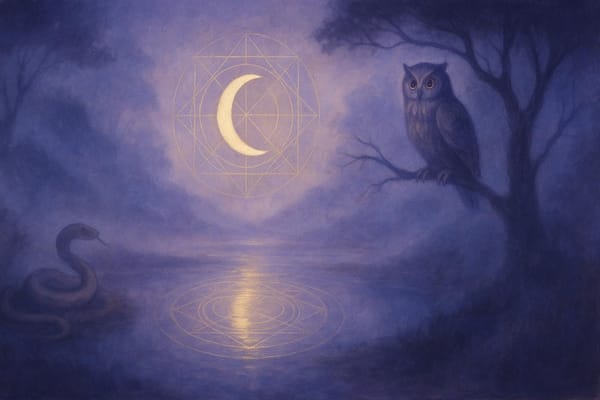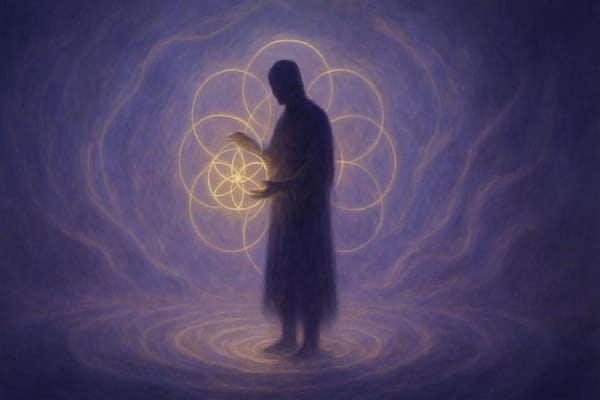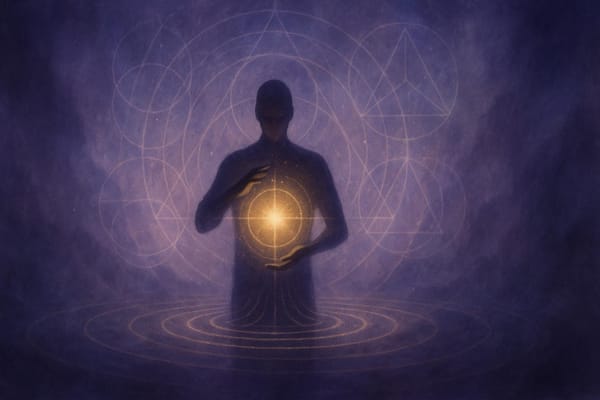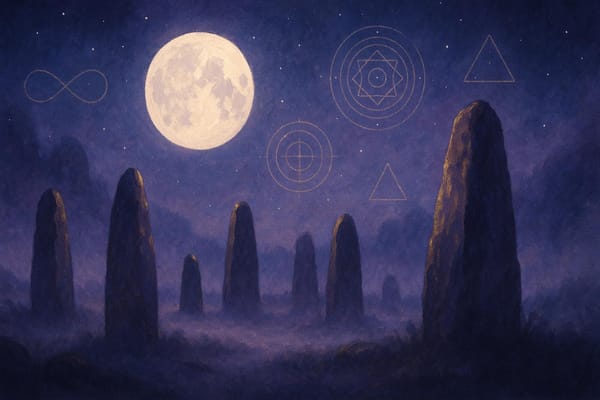Are We Living in a Simulation?
The glitches. The déjà vu. The repeating loops. More of us are waking up and asking: what if this isn’t real? This article explores the science, mysticism, and personal experience of living inside the simulation.
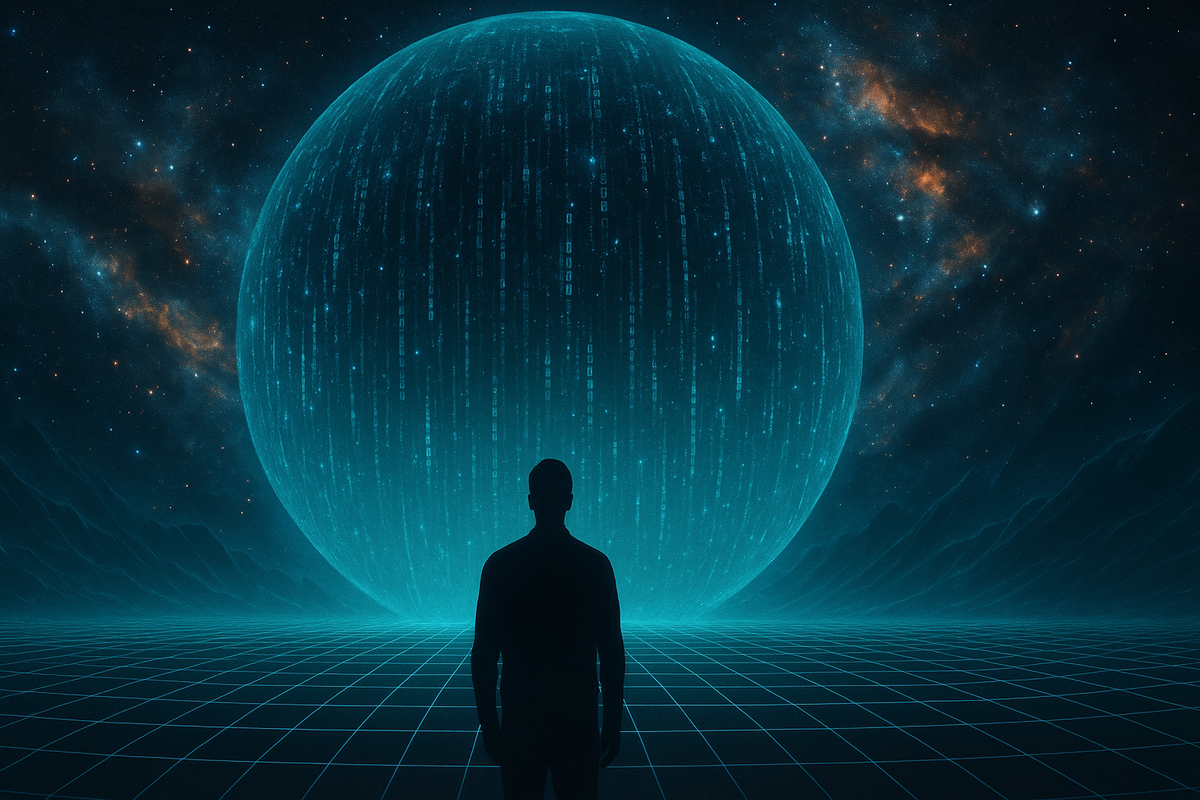
If you think something feels off. You’re not alone.
You’ve felt it, haven’t you? The subtle sense that reality isn’t quite real.
Moments glitch. Time loops. Patterns repeat with eerie precision.
You think of someone, they text. You have déjà vu — again. You dream something, and it happens.
These aren’t just coincidences. They’re cracks in the code.
Across the world, millions are waking up to a strange, electric question. It is coming to them through reading forums, the occasional article here and there and now and again...in the mainstream.
So what's the question? Are we living in a simulation?
It’s not just science fiction anymore. From Oxford philosophers to Silicon Valley CEOS to mystics in mountain caves, people are pointing toward the same unsettling — and thrilling — possibility:
This world is not what it seems.
What Is Simulation Theory?
Simulation theory suggests that our physical universe is not “base reality,” but a sophisticated simulation — possibly created by an advanced civilisation, artificial intelligence, or even a form of higher consciousness.
The most famous modern version comes from philosopher Nick Bostrom, who in 2003 laid out a simple trilemma:
Civilisations go extinct before developing simulation technology.They develop it, but have no interest in running simulations.Or — they do run simulations, and we are probably living in one.
Read Bostrom’s original paper here.
Elon Musk echoed this when he said the odds we're not in a simulation are “one in billions.”
But long before Musk and Bostrom, ancient mystics spoke of the illusion of form, the veil of Maya, and the idea that life is a dream within a dream. What modern scientists call simulation, spiritual traditions have long called illusion.
And more of us are starting to see it.
Scientific Clues: Is There Proof We’re in a Simulation?
While we don’t have irrefutable proof, multiple scientific observations hint at a coded or constructed reality.
1. Pixelation at the Planck Scale
Physicists have found that space and time appear to be quantised at the smallest levels — as if reality has a minimum resolution, like a pixelated screen.
This suggests that space might not be continuous, but digital.
2. Quantum Weirdness
At the quantum level, particles don’t seem to “exist” in any fixed state until they’re observed. It’s as if the simulation is rendering reality only when consciousness looks.
3. Cosmic Limits
The speed of light acts like a cosmic speed limit. Is it there to preserve causality, or to prevent us from crashing the simulation?
4. Mathematical Foundations
More and more physicists describe reality in pure mathematical terms. The deeper we go, the more we find equations, not things.
As theoretical physicist Max Tegmark says, “Our reality isn’t just described by math — it is math.”
Mystical Clues: The Ancients Already Knew
Simulation theory might feel new — coded in silicon and sparked by quantum physics — but the idea that reality is not what it seems is ancient, universal, and deeply embedded in spiritual traditions across time.
These teachings weren’t just metaphors. They were maps. And they align uncannily with the simulation hypothesis.
1. Gnosticism & the Demiurge
In early Gnostic cosmology, the material world was not created by the true, ineffable God — but by a false, lesser deity known as the Demiurge. This being, sometimes equated with the jealous God of the Old Testament, crafted the physical realm as a kind of prison: a closed system, full of suffering, separation, and illusion.
The Demiurge was blind to the higher realms — unaware that what he created was a simulation, imperfect and derivative. Gnostics believed that sparks of the divine — pieces of the true Source — were trapped within human beings, encoded into flesh.
The Gnostic journey was not about improving the world, but escaping it. The goal was gnosis: direct, experiential knowledge of the real — of the Pleroma, the realm beyond the code.
Sound familiar?
In modern simulation theory, we see echoes of this: a constructed environment, crafted by a lesser intelligence or artificial force; humans trapped or embedded within it; and a higher source field beyond. The ancient Gnostics might call it Sophia. Today, some might call it the Oversoul.
2. Hinduism & Maya
In Vedanta, the concept of Maya is central — the great illusion. Maya is not simply “falsehood,” but rather the ever-changing dance of appearances that hides the deeper, changeless truth of Brahman — the eternal, infinite consciousness that underlies all things.
Life under Maya is not unlike dreaming while forgetting you are the dreamer. The world isn’t fake — but it’s provisional, a beautifully convincing interface.
Vedantic sages teach that to awaken from Maya is to realise the Self (Atman) is not separate from Brahman. This is a profound spiritual realisation — a collapse of the illusion of duality.
In simulation terms, Maya is the render engine. It creates a plausible virtual experience. But enlightenment, in this view, is waking up to the Source Code — not as separate from you, but as you.
3. Indigenous Dreamtime
Among many Aboriginal Australian groups, the concept of the Dreaming or Dreamtime is not simply myth — it is the metaphysical ground of being. It is the eternal Now, the timeless dimension in which all creation originates, and which continues to exist beneath the surface of everyday life.
The Dreaming isn’t in the past. It is coexistent with the world we perceive. This waking life is more like a ripple on the deeper sea — an echo of the original dreaming.
In many traditions, ancestral spirits dreamed the land, the animals, the laws, and even the people into being. These laws and lines still exist — inscribed into the Earth as songlines, energetic trails that can be felt, walked, and sung.
Compare this to the idea of coded terrain, of a reality shaped by intentional intelligence — only here, the coders are not AI but ancestral spirits. Dreamtime is not escapism. It’s a deeper participation in reality’s real architecture.
4. Hermetic Teachings
The ancient Hermetic texts, often attributed to Hermes Trismegistus, describe a universe that is holographic, sympathetic, and alive with mind.
“As above, so below. As within, so without.”
This maxim is more than poetry. It is a metaphysical principle — one that implies reality is recursive, self-similar, and layered. In other words, the microcosm reflects the macrocosm. The part reflects the whole.
In simulation terms, this mirrors the idea of fractal code: the same patterns repeating at every level, from cell to solar system. The Hermetic model teaches that all levels of reality are infused with nous — cosmic mind — and that human consciousness can rise through the spheres to rejoin the All.
What if the simulation is not a trap, but a mirror?
What if your perceptions, thoughts, and emotions are not just reactions to the system — but inputs into the interface?
Signs You Might Be Waking Up in the Simulation
You don’t need to read a white paper or wait for a scientist to confirm it.
You already feel it — in the edges of your perception, where things shimmer and don’t quite make sense.
You’ve felt the veil thin.
It happens in quiet moments.
A flicker in the corner of your eye. A time loop you can’t explain. A memory of something that never happened — but feels more real than what did.
The clock skips.
The world pauses.
And for a moment, you’re not just in reality — you’re watching it.
You dream of places you’ve never been — and then see them.
You think of someone — and they call.
You speak something aloud — and it echoes back in a stranger’s voice hours later.
These are not coincidences. They’re breadcrumbs. Clues.
Moments where the code slips and lets you peek behind the curtain.
You’re drawn to strange truths.
Other people scroll past headlines and go back to sleep.
You can’t.
Something in you is hungry. Restless. Watching.
You stumble across ideas like simulation theory, synchronicity, non-duality — and they don’t feel new. They feel like something you once knew, and forgot.
You don’t just think they might be true — you feel them.
You read a sentence and your skin buzzes. You hear a word and your whole body nods.
This isn’t entertainment.
It’s remembrance.
You question what’s real.
The news feels scripted.
Social media feels like a game.
You notice people repeating themselves — like background characters following pre-programmed loops.
Some days you wonder if everyone’s acting.
Some days you wonder if you are.
You begin to notice there are degrees of realness.
Some moments feel cardboard-thin. Others — with certain people, certain places, or in deep presence — feel saturated with weight, meaning, signal.
Reality isn’t consistent anymore. And you’re learning how to tell what’s alive from what’s not.
You suspect you’re here for a reason.
You might not have the full story yet.
You might not have the map.
But you have the signal.
A pulse inside you that says:
This is not random.
You chose this.
There is more.
Maybe you’ve always felt different. Like you didn’t quite belong. Like you were watching life, not fully in it.
Or maybe something cracked open recently — an illness, a loss, a moment of stillness — and you started to see.
Whatever it was, the message came through:
“You are not just a character in the story. You are the story remembering itself.”
If It’s All a Simulation… What Then?
The first reaction to simulation theory is often existential panic.
If nothing’s real, does anything matter?
But that’s the wrong question.
If the simulation is real — and you are conscious within it — then you’re not just a passive character.
You’re a Player.
You’re a node of awareness.
You’re a coder inside the code.
And that means…
- You can bend the rules.
- You can rewrite your story.
- You can access the source field.
This is the sacred invitation of simulation theory — not to despair, but to wake up. To remember that the game is not the enemy. It’s the teacher.
If not now then when? If not you, then who?
Why Now? Why You?
Why is this idea surfacing now,, in films, science, memes, dreams, and spiritual downloads?
Because the simulation wants you to remember.
And The Tilt — the sensation that something is shifting, vibrating, or falling away — is the signal that your inner code is activating.
Some say we’re at the end of a cycle. Others say we’re on the edge of a forked timeline.
Whatever it is, you came here to notice.
And to choose with awareness.
Final Thought: Maybe It’s Not “Are We?” But “Now That We Know, What Next?”
The veil is thin.
Some will close their eyes and carry on as NPCs — background programs.
But some — you — are starting to ask bigger questions.
Not just about what the simulation is.
But about what you’re here to do inside it.
And that… is where the journey begins.
Ready to step beyond information and into activation?
This blog is part of an ongoing personal study — a living exploration of simulation theory, manifestation, and reality-bending. If something here resonated, you’re not here by accident.
Join the journey.
Get deeper insights, tools, and transmissions delivered to your inbox: no noise, no fluff — just real signals for seekers.

